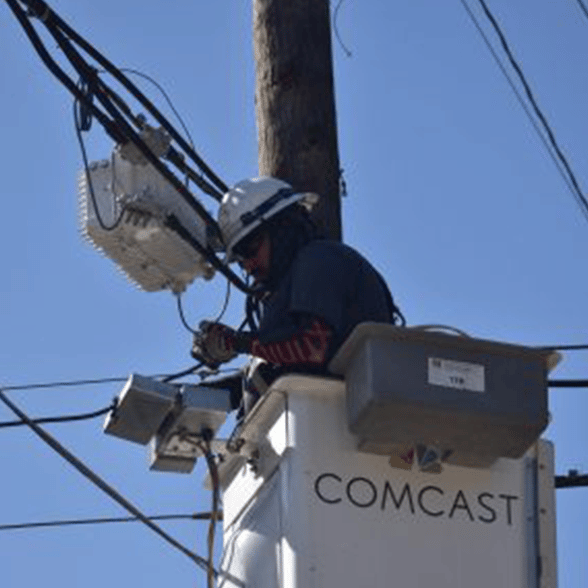 Even though 75% of CenturyLink’s business will come from the enterprise market after its merger with Level 3 Communications is completed, “we’re committed to the consumer business,” said CenturyLink Chief Financial Officer Stewart Ewing, who outlined key CenturyLink consumer initiatives at an investor conference today.
Even though 75% of CenturyLink’s business will come from the enterprise market after its merger with Level 3 Communications is completed, “we’re committed to the consumer business,” said CenturyLink Chief Financial Officer Stewart Ewing, who outlined key CenturyLink consumer initiatives at an investor conference today.
“We continue to invest and drive higher [broadband] speeds.”
CenturyLink has been upgrading its network, and according to Ewing, that work should soon pay off. He said the company expects to see broadband net additions turn positive in the first quarter of 2017.
CenturyLink Consumer Strategy
Ewing reiterated CenturyLink’s view that broadband speeds of 25 Mbps to 40 Mbps should be sufficient for most consumers for “a long time.” Those speeds should be sufficient even for a “Brady Bunch” family with multiple family members on their mobile devices at the same time, he said.

He acknowledged that cable companies also have been upgrading network speeds, but added that “we’ve always competed at a disadvantage to cable from a speed standpoint.”
One of CenturyLink’s advantages, however, is that the company offers symmetrical broadband speeds. That is becoming increasingly important as consumers seek not only to access material from the internet but also to upload material to it.
Ewing also sees synergies between the enterprise and consumer businesses. He noted that enterprise and consumer traffic will ride on the same network and that the company’s consumer business gives the company local connectivity to business customers.
CenturyLink OTT Video
An over-the-top video offering will be an important element of CenturyLink consumer plans. The company recently expressed a preference for its new OTT offering over its traditional IPTV offering, dubbed Prism TV. A key issue is that the OTT offering can be delivered over a broadband connection supporting just 10 Mbps, while Prism requires higher-speed connections supporting speeds of at least 25 Mbps.
The CenturyLink OTT video offering is currently in trials in four markets and the company expects to roll out more markets “probably in second quarter,” Ewing said.
In comparison with Prism, the CenturyLink OTT video offering includes a smaller package of channels, but unlike some video “skinny bundles,” the offering includes local channels, which Ewing said will be a differentiator.
Like other telcos offering video services, CenturyLink has found the economics of delivering video challenging, in part because of steeply climbing content costs. Ewing cautioned that the OTT video offering “won’t generate a lot of EBITDA.”
He added, though, that it will “pull through broadband.” He noted that 95% of Prism customers choose CenturyLink for broadband and the company expects results to be similar for the CenturyLink OTT video offering.
Ewing made his comments at the Deutsche Bank Media & Telecom Conference, which was also webcast.


